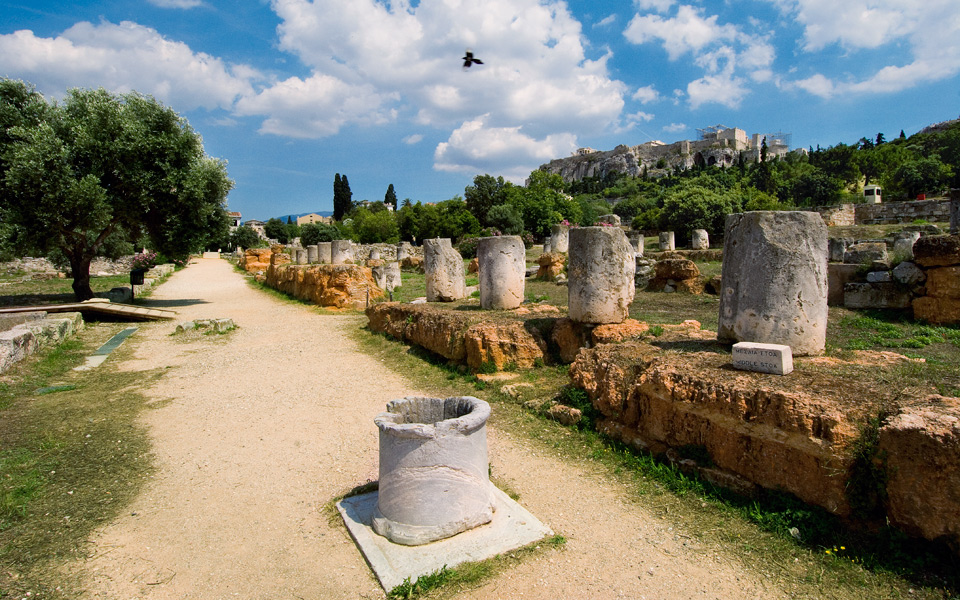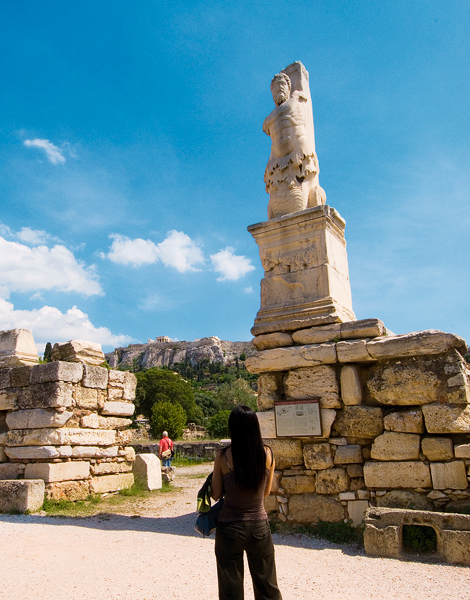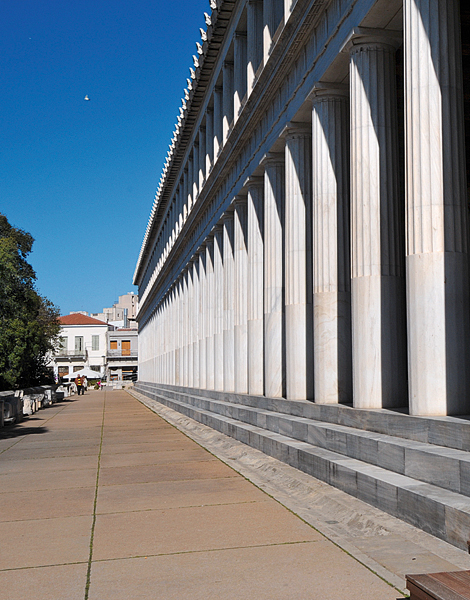A Perfect Saronic Weekend: Exploring Aegina’s Ancient Highlights
A compact archaeological guide to the...

The Athenian Agora
© Clairy Moustafellou
The Athenian (or Greek) Agora was the beating heart of ancient Athens, a crossroads in the middle of the city, pulsing with all the different people and ordinary activities that made up daily life in the age-old city of Athena. This large, low-lying area in the northern shadow of the Acropolis, by the time of Themistocles, Pericles and Socrates in the 5th century BC, already had a long history, once serving as a place for prehistoric and Iron Age settlement and burial, later as a focus of religious activities, a public gathering spot, a venue for commerce and currency-exchange, as well as a political, legislative and administrative center for the often-challenged but resilient Athenian democracy.
Today, the Athenian Agora is a quiet refuge within bustling modern Athens, an archaeological park that offers shady trees, winding paths, venerable ruins of profound historic significance for world history, a reconstructed Hellenistic-era stoa (a colonnaded walkway, with shops – now converted into a fascinating small museum) and one of the best preserved (not reconstructed!) ancient temples to be found anywhere in Greece.
As you enter the Athenian Agora, you have a choice – head straight for the Stoa of Attalos Museum, where you can orient yourself with maps, information panels and intriguing exhibits from the American School of Classical Studies’ archaeological excavations, ongoing since the 1930s, or begin exploring immediately, following one of many paths and making your own “new discoveries” at every turn. Entrance to the agora can be made either from the Acropolis side or from the opposite, northern side, not far from Monastiraki metro station.
“ Today, the Athenian Agora is a quiet refuge within bustling modern Athens, an archaeological park that offers shady trees, winding paths and venerable ruins of profound historic significance.”

One of the Tritons (mermen) that once adorned the Odeon of Agrippa (ca. 15 BC), a music hall accommodating up to 1,000 people.
© Clairy Moustafellou

Stoa of Attalos (2nd cent. BC), a Hellenistic-era “mall” with 42 shop spaces on two levels. Destroyed in AD 267 by the invading Herulians.
© Clairy Moustafellou
On its northern side, the ancient agora has been cut by a train track (late 19th century) and overbuilt by Adrianou Street and the Monastiraki neighborhood. If you look down into the excavation area on the right-hand, northern side of Adrianou, you will see the stepped architectural remains of the famous Painted Stoa, where Zenon of Cyprus first introduced Athenians to Stoic philosophy.
After entering the agora gate, you might turn right to the line of now-ruinous buildings once adorning the foot of the Kolonos Agoraios hill. Here was the governmental center of ancient Athens, including (R to L) the Royal Stoa (for administration of religious activities, laws), the Stoa of Zeus (possibly an administrative and dining center), the Metroon (official records hall), the Bouleuterion (council chamber) and the Tholos (executive council’s lounge, for nourishment and rest). Socrates is known to have frequented the Stoa of Zeus; he also served on the executive council, used the Tholos and likely discussed philosophy with young Athenian men in the House of Simon the Shoemaker, opposite the Tholos.
Among the agora’s many temples, altars and other shrines, dedicated to gods including Apollo, Rhea and Ares, there was especially the hilltop temple of Hephaistos and Athena. This mid-5th century BC Doric temple, erected contemporaneously with the Parthenon, was particularly important to metal workers and other artisans, many of whom had workshops nearby. In the Hephaisteion’s colorful later history, it was converted into a Christian church, a 19th century storehouse for antiquities and an execution ground during the Greek Civil War.
Along the agora’s south side were the Heliaia (law courts), South Stoa and Mint. Commercial activities took place in the South Stoa, which also had dining rooms, and in the Stoa of Attalos. In the agora’s center, ancient visitors could read public announcements, seek the best rate at the money-changers’ tables or take in street performances by Thespis and other early actors, the progenitors of modern drama.
“ Socrates is known to have frequented the Stoa of Zeus; he also served on the executive council, used the Tholos and likely discussed philosophy with young Athenian men in the House of Simon the Shoemaker, opposite the Tholos. ”
ANCIENT AGORA AND MUSEUM
24 Adrianou • Tel. (+30) 210.321.0185
Opening hours: Daily 08.00 – 20.00 • Tickets: Full: € 4, Reduced: € 2
A compact archaeological guide to the...
A perfect weekend getaway: wander among...
The Olympic elite, Hollywood’s finest, the...
Biology, flavor and local stories all...